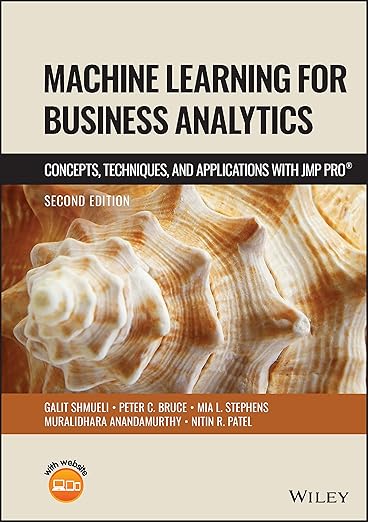
Book
Epigenetics and Health
ISBN : 9781119307983
Author : Michelle McCulley
Publisher : Wiley
Year : 2024
Language : English
Type : Book
Description : Table of Contents Preface ix Overview xi 1 How Do Genes Work? 1 1.1 DNA, Genes and Proteins 1 1.2 Gene Control, Homeostasis and Epigenetics 4 1.3 DNA Methylation and Regulation of Gene Expression 5 1.4 Post-transcriptional Regulation of Gene Expression 6 1.5 Promoters and Enhancers 7 1.6 Mutation Genotype, Phenotype, Epigenotype 8 1.7 Conclusion 9 Task 11 Further Reading 11 2 What is Epigenetics? 15 2.1 Properties and Functions of Heterochromatin and Euchromatin 16 2.2 DNA Methylation 18 2.3 DNA Demethylation 20 2.4 Chromatin Remodelling: Post-translational Modifications of Histone Proteins 22 2.5 Non-coding RNAs 26 2.6 Polycomb Proteins 27 2.7 Conclusion 29 Task 30 Reference 30 Further Reading 31 3 Epigenetic Mechanisms, Homeostasis and Potential for Manipulating the Epigenome 33 3.1 Pharmaceutical 33 3.2 DNA Methylation and Impact on Nutrition 34 3.3 Diet and Cancer Prevention 36 3.4 Dietary DNMT Inhibitors 37 3.5 Dietary HDAC Inhibitors 39 3.6 Dietary Modulators of ncRNAs 41 3.7 Precautions and Issues with Dietary Chemoprevention 41 3.8 Epigenetics and Inflammation/Immune Response 43 3.9 Epigenetic Inheritance Mechanisms 43 3.10 X-inactivation 45 3.11 Genomic Imprinting 46 3.12 Transgenerational Epigenetic Inheritance 48 3.13 Conclusion 53 Task 53 References 53 Further Reading 54 4 Tissues and Methods for Epigenetic Analyses 57 4.1 Methods for Assessing Genome-Wide DNA Methylation-EPIGENOMICS 59 4.2 Methods for Assessing Genome-Wide Histone Modifications 60 4.3 Integrative Analysis – Looking at DNA Methylation and Histone Modification 61 4.4 Novel Technologies 62 4.5 Single-Cell Approaches 62 4.6 ncRNAs 63 4.7 Oxidised DNA Methylation 64 4.8 Data Analysis 64 4.9 Conclusion 65 Task 65 References 67 Further Reading 68 5 Normal and Abnormal Epigenetic Variation 69 5.1 Epigenetics and Trained Immunity 72 5.2 Epigenetics and Vascular Senescence 73 5.3 Epigenetics and Obesity 74 5.4 Epigenetics and Cumulative Toxin Exposure: Toxicoepigenomics 76 5.5 Epigenetics, COVID-19 and Environmental Chemical Exposures 79 5.6 Case Focus: Rheumatology 80 5.7 Conclusion 81 Task 82 References 83 Further Reading 84 6 Cancer Epigenetics 91 6.1 DNA Methylation and Role in Cancer Development 93 6.2 Histone Modification and Role in Cancer Development 94 6.3 Non-coding RNAs and Role in Cancer Development 95 6.4 Chromatin Remodelling and Role in Cancer Development 96 6.5 DNA Damage Response and Role in Cancer Development 97 6.6 Epigenetics and Metabolic Programming in Cancer 99 6.7 Summary 100 6.8 Epigenetic Alterations in Cancer and Therapeutic Design 101 6.9 Conclusion 103 Task 104 Further Reading 104 7 Mental Health Epigenetics 107 7.1 Specific Genes of Interest with Regards to Mental Health 108 7.1.1 NR3C1– Glucocorticoid Nuclear Receptor Variant 1 109 7.1.2 SLC6A4 – Serotonin Transporter 110 7.1.3 BDNF – Brain-Derived Neurotrophic Factor 111 7.1.4 OXTR – Oxytocin Receptor 111 7.2 Specifically Focussing on Schizophrenia 111 7.3 Transgenerational Epigenetic Influences on Predisposition to Psychiatric Disorders 112 7.4 Suicide/PTSD 114 7.5 Stress, Epigenetics and Transgenerational Epigenetic Inheritance: Consequences of Inequity/Deprivation 114 7.6 Conclusion 117 Task 118 References 118 Further Reading 119 8 Developing a Project 121 8.1 Considerations for Epigenetic Research 121 8.1.1 What Is Meaningful in Terms of Tissue Analysed? 121 8.1.2 What Are the Health Promotion/Public Health Consequences? 122 8.1.3 What Are the Consequences of Epigenetic Intervention? 123 8.1.4 How Do We Design Epigenetic Drugs? 124 8.1.5 What Does Predictive Epigenetic Testing Look Like? 127 8.2 Conclusion 128 8.3 Getting Started 129 Why Do Epigenetic Research? What Do You Want to Achieve? 129 Reference 132 Further Reading 132 Index 135








